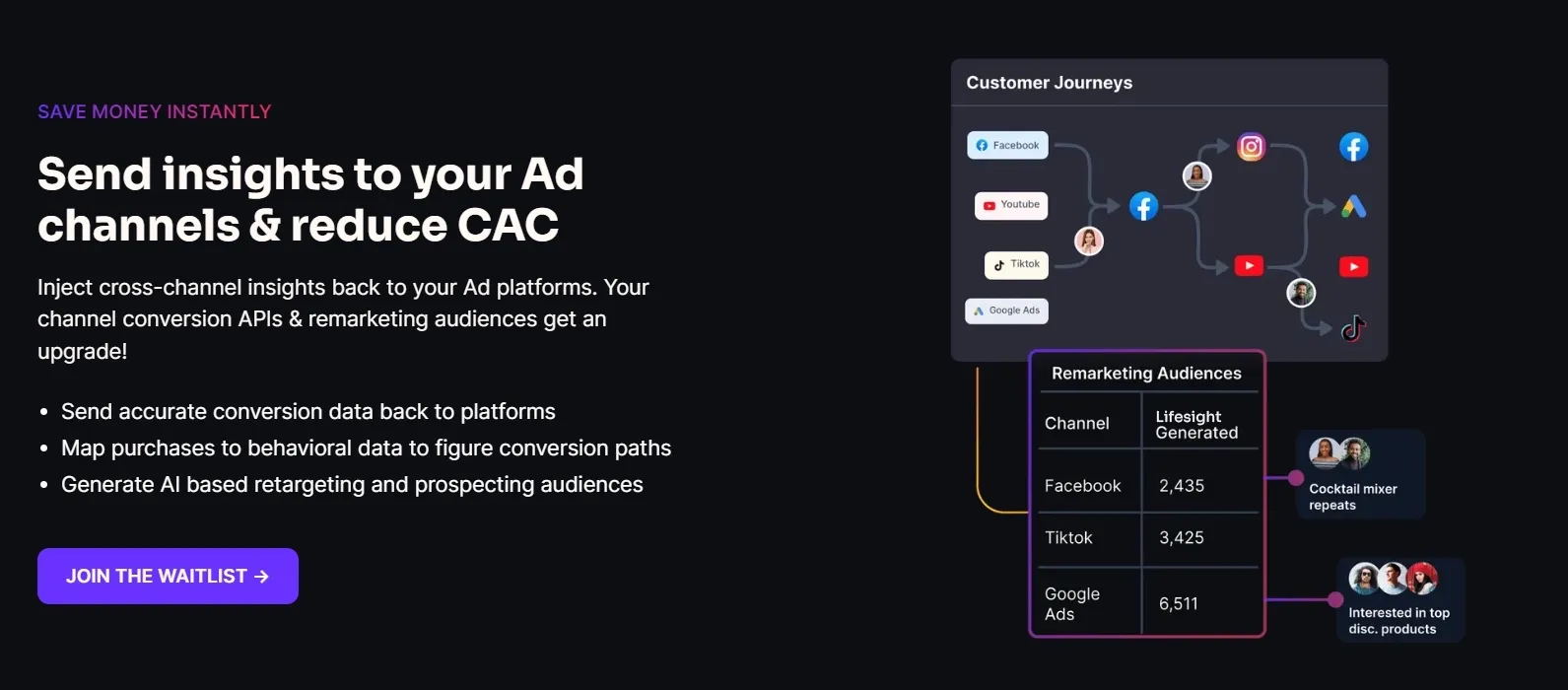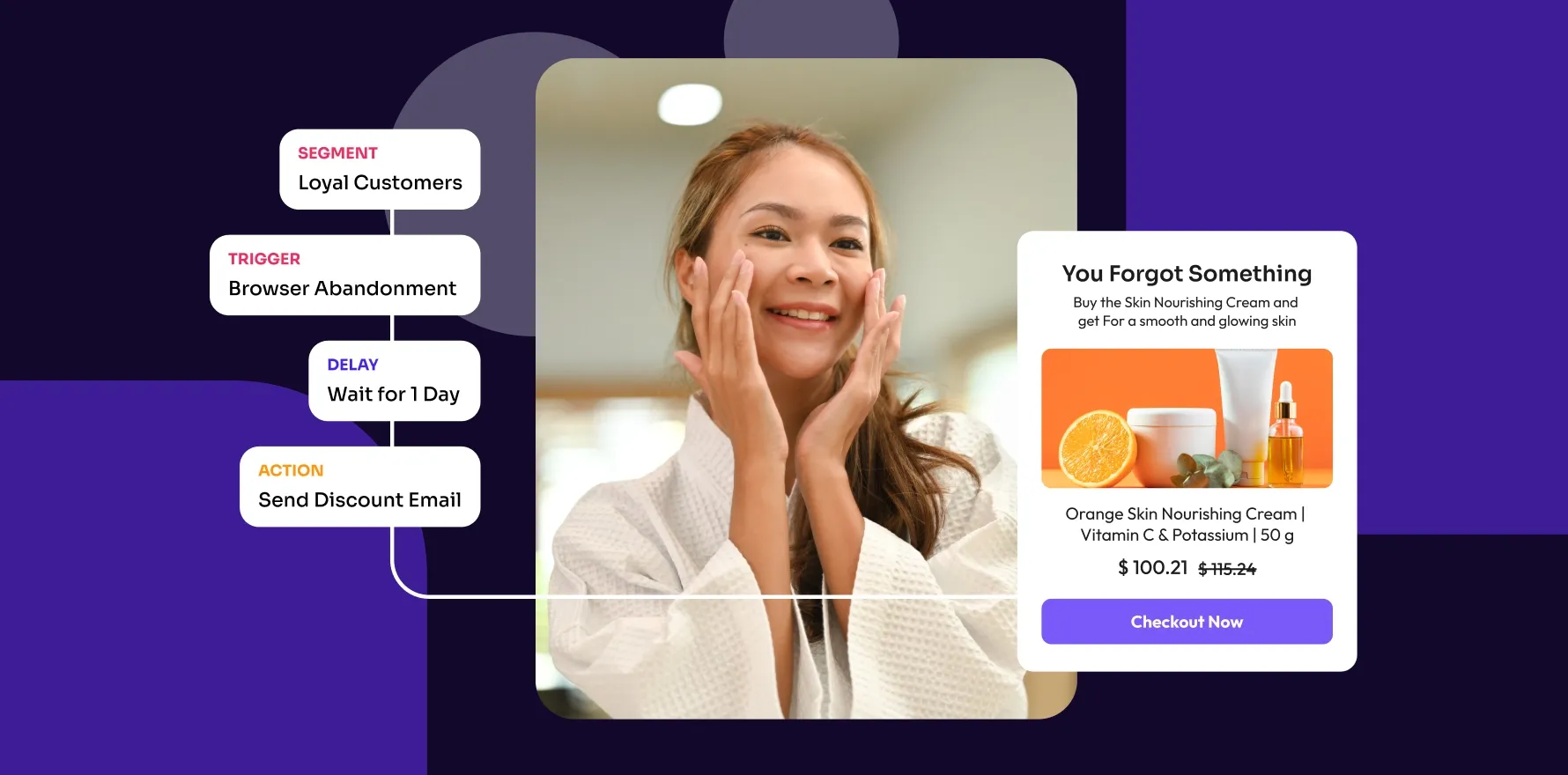In a world where data has become the new oil, ecommerce businesses are at the epicenter of this revolution. It’s no longer enough to simply have an online presence. The ecommerce landscape is shifting, and those who don’t adapt will be left behind.
According to eMarketer, as of 2022, global ecommerce sales accounted for 19.5% of total retail sales, and it’s projected to hit 22.3% by the end of 2023. That’s nearly a quarter of all retail sales occurring online. However, the market is also becoming more crowded. With this increasingly competitive landscape, it’s no longer enough to simply exist online – businesses need to leverage all tools at their disposal to stand out.
“In the old world, you devoted 30% of your time to building a great service and 70% of your time to shouting about it. In the new world, that inverts.” This inversion is the crux of a data-driven approach to business, particularly in the realm of ecommerce. – Jeff Bezos
Data-driven attribution models offer a competitive edge. They provide insights into customer behavior, enabling businesses to understand which touchpoints along the customer journey are most influential in driving sales. Mary Meeker’s 2021 Internet Trends Report showed that businesses using data-driven attribution were twice as likely to increase their customer retention rates, and 1.6 times more likely to grow their market share.
This blog post is dedicated to uncovering the strategic significance of data-driven attribution for ecommerce growth. We’ll delve into why this approach is critical to your ecommerce strategy, and how it can be employed to drive growth and profitability. The future of ecommerce is data-driven, and with the right strategies, you can unlock unprecedented growth opportunities.
Understanding Data-Driven Attribution
Data-driven attribution is a powerful tool that ecommerce businesses can use to measure the effectiveness of their marketing campaigns. By utilizing data and machine learning algorithms, data-driven attribution accurately assigns credit to each individual channel and touchpoint that contributes to a conversion.
This means that businesses can make informed decisions about which marketing channels and campaigns are most effective in driving sales, improving return on investment (ROI), and ultimately, achieving growth.
What is Data-Driven Attribution?
At its core, data-driven attribution is a data-driven methodology for assigning credit to marketing channels and touchpoints that contribute to a conversion. This means that instead of relying on simple rules like last-click attribution, data-driven attribution models use statistical algorithms to analyze large data sets and determine the channels and touchpoints that have the most significant impact on a business’s goals.
For ecommerce businesses, this can mean analyzing customer journeys and behavior to determine which touchpoints are most effective in driving conversions. By understanding the customer journey, businesses can optimize their marketing campaigns to better target their audience and improve their ROI.
The Importance of Accurate Attribution in Ecommerce
Accurate attribution is critical to measuring the effectiveness of any marketing campaign. In ecommerce, attribution allows merchants to identify which channels and campaigns are generating the most revenue and which areas need improvement.
Without accurate attribution, businesses may be wasting valuable resources on campaigns that are producing a minimal return or not optimizing channels and campaigns that have the most potential for growth. By utilizing data-driven attribution, businesses can make informed decisions about where to allocate resources and optimize their marketing campaigns for maximum impact.
Traditional Attribution Models vs. Data-Driven Attribution
Traditional attribution models, such as last-click, rely on simple rules to assign credit to the channel or touchpoint immediately preceding a conversion. While last-click attribution is simple to understand and implement, it does not provide a complete picture of the customer journey and may lead to biased and inaccurate conclusions.
Data-driven attribution, on the other hand, uses statistical modeling to determine the channels and touchpoints that have the most influence on the customer journey, leading to more accurate and actionable insights. By analyzing large data sets and using machine learning algorithms, data-driven attribution models can provide businesses with a more complete picture of their customer’s behavior and help them make informed decisions about their marketing campaigns.
D2C guru Siddhant Aneja has some fresh thoughts on the topic of data-driven attribution.

(Continue reading: 5 Common Mistakes To Avoid In Marketing Attribution)
Implementing Data-Driven Attribution in Your Ecommerce Strategy
With the growth and progress of e-commerce businesses, it is crucial to fully grasp the role that marketing plays in driving revenue.
To leverage data-driven attribution effectively, ecommerce businesses must first assess their current attribution model and determine which data-driven attribution tools are best suited to their goals. They must then integrate the chosen attribution model with their ecommerce platform and marketing systems.
Assessing Your Current Attribution Model
Before implementing data-driven attribution, businesses must assess their current attribution model to identify any gaps or limitations. This evaluation should consider how the business defines conversions and how they currently assign credit and ROI to marketing channels.
For example, if a business is currently using a last-click attribution model, it may be overlooking the impact of other touchpoints in the customer journey. By evaluating their current attribution model, businesses can identify areas for improvement and set themselves up for success with data-driven attribution.
Choosing the Right Data-Driven Attribution Tools
Numerous data-driven attribution tools are available, each with unique features and capabilities. Businesses should evaluate multiple options to determine which tools align with their goals and marketing systems. Factors to consider include accuracy, flexibility, scalability, and cost.
Popular data-driven attribution tool – Lifesight helps you optimize ads with accurate data

The inbuilt identity resolution and multi-device tracking allow you to monitor all paid, owned & earned channels.
Analyzing and Interpreting Attribution Data
Attribution data is a vital component of any ecommerce business’s marketing strategy. It helps businesses understand which marketing channels drive conversions, which customer touchpoints are most effective, and how to allocate resources for maximum ROI. Once a data-driven attribution model is in place, there are several ways businesses can analyze and interpret the data to drive growth and improve the customer experience.
Identifying High-Performing Marketing Channels
One of the key benefits of data-driven attribution is the ability to evaluate and compare the performance of various marketing channels. By analyzing attribution data, businesses can identify which channels are driving the most conversions and revenue. This information can help businesses allocate resources more effectively and focus on campaigns that will drive growth and generate ROI.
For example, if attribution data shows that paid search is driving the majority of conversions, a business may choose to invest more heavily in paid search campaigns and optimize their ad spend accordingly. By identifying high-performing channels, businesses can make data-driven decisions about where to allocate their marketing budget for maximum impact.
Uncovering Customer Journey Insights
Data-driven attribution also provides businesses with detailed insights into customer behavior and interactions with their brand. By analyzing the customer journey, businesses can identify which touchpoints are most effective at driving conversions and which areas of the customer experience may need improvement.
For example, if attribution data shows that customers who engage with social media content are more likely to convert, a business may choose to invest more heavily in its social media strategy and focus on creating engaging shareable content. By understanding the customer journey, businesses can optimize their marketing strategies better to meet the needs and preferences of their target audience.
Evaluating the Impact of Attribution Data on ROI
Once data-driven attribution is in place, businesses can evaluate the impact of attribution data on ROI. By tracking the impact of various marketing campaigns on revenue, businesses can make informed decisions about campaign optimization and resource allocation.
For example, suppose attribution data shows that a particular campaign is driving a high volume of conversions and generating a strong ROI. In that case, a business may choose to invest more heavily in that campaign and optimize its messaging and targeting to improve results further. By evaluating the impact of attribution data on ROI, businesses can make data-driven decisions about how to allocate their marketing budget for maximum impact.
Optimizing Your Ecommerce Marketing Mix
Marketing is an essential aspect of any ecommerce business. It is the process of promoting products or services to potential customers, with the aim of generating sales and revenue. However, with so many marketing channels available, it can be challenging to determine which ones are the most effective. This is where data-driven attribution comes in.
Data-driven attribution is a method of attributing credit to the marketing channels that contribute to a sale. By accurately tracking the ROI of various marketing channels, businesses can optimize their budget allocation to achieve maximum growth. This means that businesses can shift resources from low-performing channels to high-performing ones, generating more revenue and increasing their bottom line.
Allocating Budget Based on Attribution Data
By using data-driven attribution, businesses can gain valuable insights into the performance of their marketing channels. This allows them to make informed decisions about where to allocate their marketing budget. For example, if a business finds that its social media campaigns are generating a higher ROI than its email campaigns, it can shift more resources toward social media to maximize its growth potential.
Refining Your Marketing Campaigns
Data-driven attribution also provides businesses with the insight needed to refine their marketing campaigns continually. By analyzing attribution data, businesses can identify which marketing tactics are working and which ones are not. This means that they can refine their tactics to make their campaigns more impactful, reducing wasted resources and improving results.
If a company’s Facebook advertisements are more profitable than its Google ads, they can tweak their Google ads to increase their ROI. This might involve changing the ad copy, targeting a different audience, or using a different bidding strategy.
Personalizing the Customer Experience
Finally, data-driven attribution can help businesses personalize the customer experience by tailoring marketing messages to specific customer preferences and needs. Personalization has been shown to improve customer satisfaction and loyalty, leading to increased revenue and more significant growth.
For example, if a business finds that a particular customer is interested in a specific product category, it can send them personalized emails or ads promoting products in that category. This can help to build a stronger relationship with the customer, increasing the likelihood of repeat purchases and brand loyalty.
Final Thoughts
Navigating the complex landscape of ecommerce in the digital age can seem daunting, but with data-driven attribution models at your fingertips, you are equipped to turn these challenges into opportunities. Every customer interaction, every click, every conversion – it all generates invaluable data that can shape your strategic decision-making and fuel your business growth.
Embracing a data-driven approach isn’t merely an option for ecommerce businesses today; it is an absolute necessity. By leveraging data-driven attribution models, businesses can make informed decisions, tailor personalized customer experiences, and ultimately, differentiate themselves from their competitors in an increasingly crowded market.
You may also like
Essential resources for your success

























































